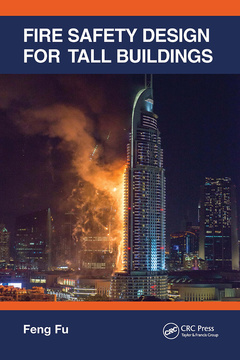Description
Fire Safety Design for Tall Buildings
Author: Fu Feng
Language: English
Subjects for Fire Safety Design for Tall Buildings:
Keywords
Fire Safety Design; Structural Fire Design; Progressive collapse; Fire Scenarios; Shard; Structural Fire Analysis; CTBUH; Tall Buildings; Blast protection; Fire Resistance Rating; Grenfell; Tensile Membrane Action; Fire dynamics; Fire Load Density; Fire safety; Composite Slabs; Building performance; Burj Khalifa; Fire in structures; Compartment Fire; machine learning; Fire Resistant Design; heat transfer analysis; British Research Establishment; Grenfell Tower; Cardington Tests; 3D modelling techniques; Limit State Function; Compartment Walls; Fire Limit State; Cardington Fire Test; Fire Spread; PAVA; Reinforced Concrete Beam; RC Beam; Steady State Thermal Analysis
Publication date: 09-2022
Support: Print on demand
Publication date: 02-2021
· 15.6x23.4 cm · Hardback
Description
/li>Contents
/li>Readership
/li>Biography
/li>
Fire Safety Design for Tall Buildings provides structural engineers, architects, and students with a systematic introduction to fire safety design for tall buildings based on current analysis methods, design guidelines, and codes. It covers almost all aspects of fire safety design that an engineer or an architect might encounter?such as performance-based design and the basic principles of fire development and heat transfer.
It also sets out an effective way of preventing the progressive collapse of a building in fire, and it demonstrates 3D modeling techniques to perform structural fire analysis with examples that replicate real fire incidents such as the Twin Towers and WTC7. This helps readers to understand the design of structures and analyze their behavior in fire.
1 Introduction2 Regulatory requirements and basic fire safety design principles3 Fundamentals of fire and fire safety design 4 Structural fire design principles for tall buildings5 Typical fire safety design strategy for tall buildings6 Fire analysis and modeling 7 Preventing fire-induced collapse of tall buildings8 New technologies and machine learning in fire safety design 9 Post-fire damage assessment
Dr. Feng Fu worked for several world-leading consultancy companies including WSP Group, where he was one of the key team members in structural fire design of the tallest building in Western Europe, the Shard. He serves for two building design standard committees of the American Society of Civil Engineers, and also acts as an associate editor and editorial board member for three international journals, He published more than 100 technical papers and three textbooks including Structural Analysis and Design to Prevent Disproportionate Collapse (CRC Press, 2016).




